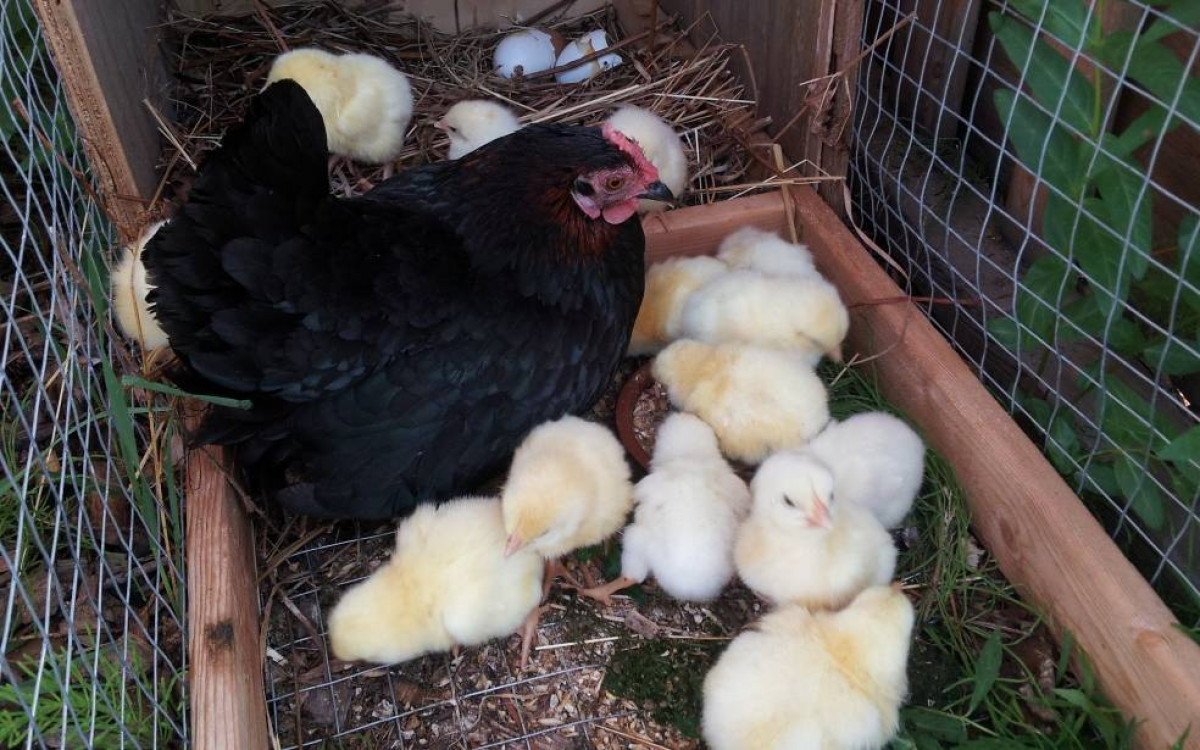A broody hen is a chicken that has decided to sit on and hatch a clutch of eggs. The eggs can be fertilized or unfertilized, the hen will sit on them anyway.
On our farm most of the eggs are fertile. The broody hen will sit on eggs for 21 days, day and night, leaving her place only once a day to eat, drink and poop.
Some breeds are more prone to becoming broody than others. On our farm, we have had silkie hens as a good example of a brood-prone breed.
Nowadays, broody hens are very rare. Why is that? The broody hen is an unproductive hen. She stops laying new eggs when she sits on eggs (3 weeks) and during the rearing period (another 2-3 months).
Since commercial poultry farms are production-oriented, they cannot allow unproductive chickens for 3-4 months. Consequently commercial production farms choose breeds that are not prone to broodiness.
On our farm, when the farmer notices that a hen becomes broody, he does his best to help her hatch in a safe and quiet place.
The chicks raised by the mother (broody hen) are stronger than the incubated ones: they seem healthier, learn faster, behave better and adapt better to the outside world.
That's why sometimes the farmer tries to "convince" a broody-hen to accept the incubated chicks. The hen knows her chicks and rejects others: she can attack them and even kill them. So how do you “persuade” her to adopt others and not your chicks?
First of all, the hatching time of the eggs on which the hen is sitting and the eggs in the incubator must be the same. When the farmer notices a hen ready to sit on eggs, and it is the right time of year to incubate, he begins a new incubation.
The world is not perfect. Sometimes the chicks hatch first in the incubator. In this case, the farmer will place the chicks from the incubator in a cage with a heating element. He will wait until the eggs under the hen begin to hatch. In a day the farmer will transfer the incubated chicks to the hen.
But sometimes the chicks are the first to hatch under the hen. In this case, the broody hen will only accept other chicks for the next two days.
In both cases, the chicks are introduced to the hen at night when she cannot see them. And accepts them all!
We're lucky chickens don't know math: a broody hen can't compare the number of eggs she has sat on with the number of little fluffy chicks around her now!
.png)

